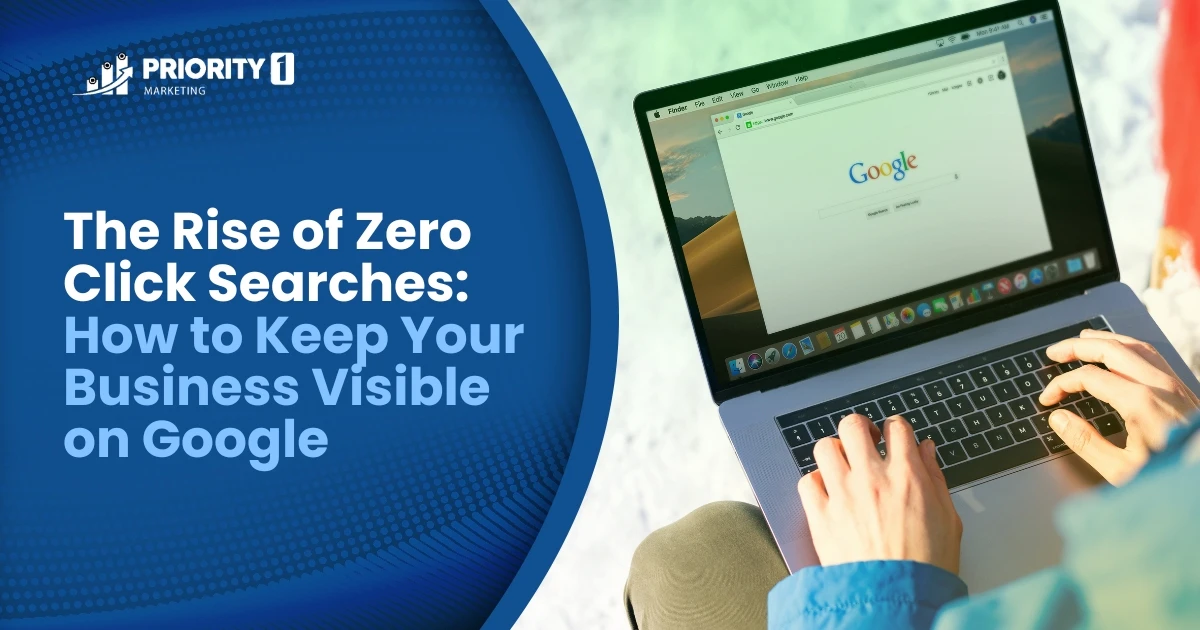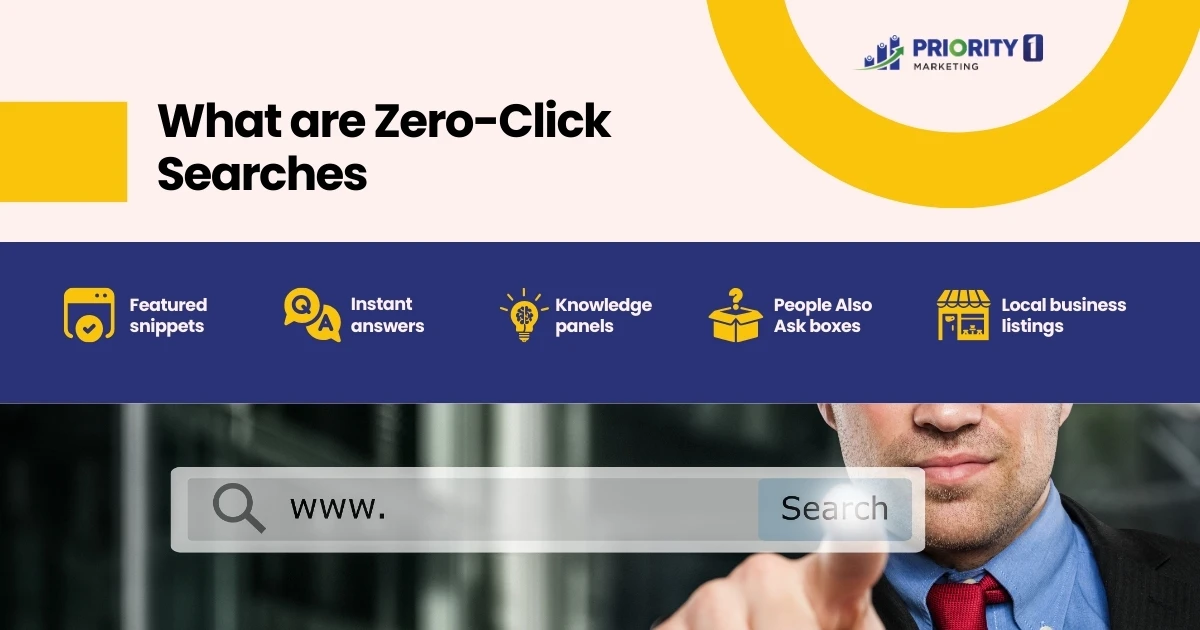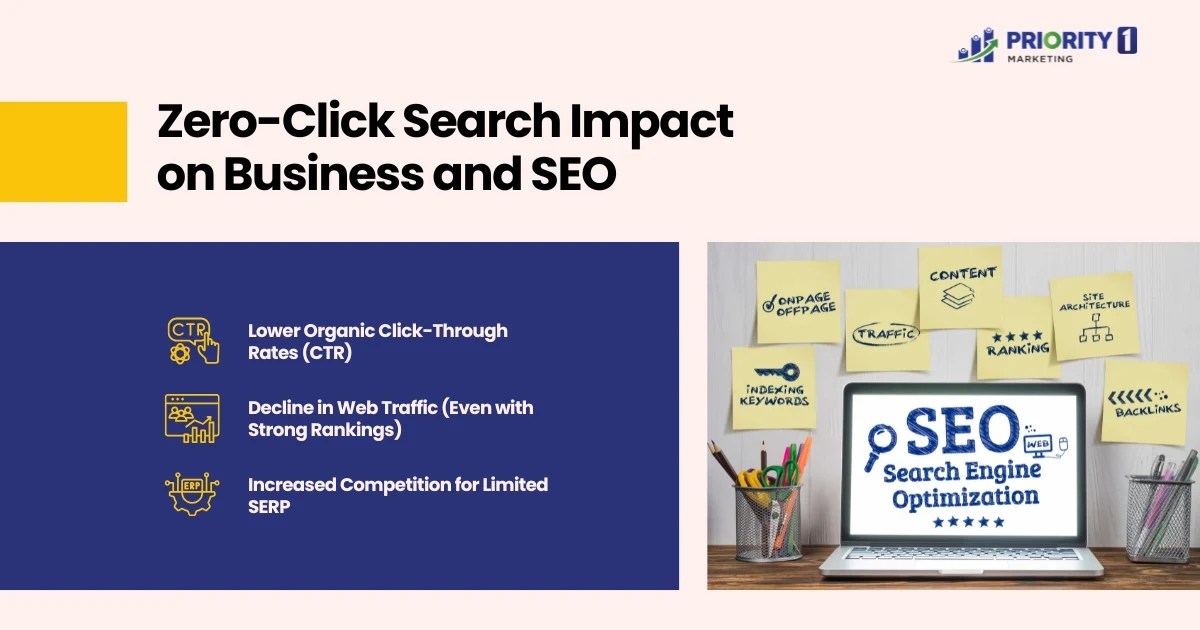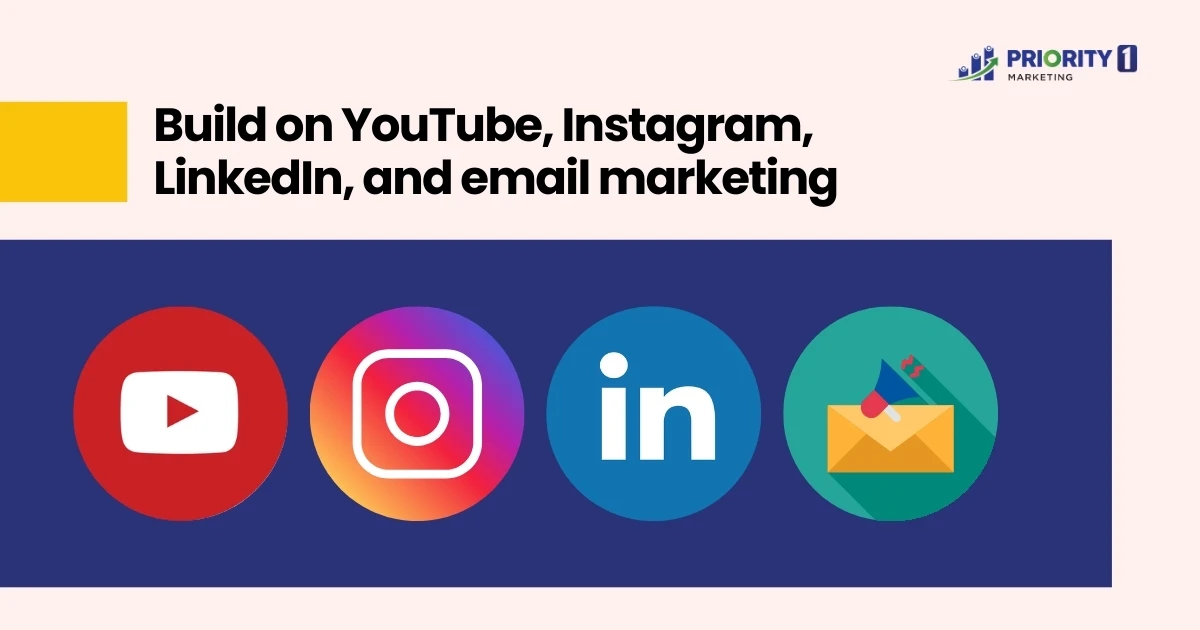
The Rise of Zero-Click Searches: How to Keep Your Business Visible on Google
Google is constantly evolving, and so is the way users interact with it. One of the most significant shifts in recent years has been the rise of zero-click searches—searches where users find the answers they need without ever leaving the search engine results page (SERP). This shift has changed the game for SEO, prompting businesses to adapt their strategies to maintain visibility, relevance, and engagement.
In this article, we’ll explore what zero-click searches are, why they’re increasing, their impact on SEO, and most importantly, what your business can do to stay visible on Google in 2025 and beyond.
Understanding Zero-Click Searches
What are Zero-Click Searches?

A zero-click search is exactly what it sounds like—a search result that satisfies the user’s query without requiring them to click on any of the results. This typically happens when Google presents information directly on the SERP, often in the form of:
- Featured snippets
- Instant answers (e.g., weather, time, calculations)
- Knowledge panels
- People Also Ask boxes
- Local business listings
These features are designed to give users fast answers. While this improves the user experience, it can lead to fewer clicks to your website, even when you rank highly.
Why Are They Increasing?
There are several reasons why zero-click searches are becoming the norm:
- Google’s push for SERP features: Google now displays more direct answers, featured snippets, and carousels than ever before.
- Mobile-first behaviour: On mobile, users prefer quick answers without navigating to new sites.
- Voice search growth: Smart assistants often provide single-answer responses pulled from Google’s top result.
- Convenience and UX: Users want answers in seconds—not minutes.
As a result, over 50% of Google searches now end without a click, according to recent industry reports.
Impact on Businesses and SEO

The shift towards zero-click searches is more than just a change in how search results look—it’s a fundamental transformation in how people access information. For businesses, especially those relying heavily on organic traffic, the implications are wide-ranging and demand a strategic response.
1. Lower Organic Click-Through Rates (CTR)
Traditionally, ranking on the first page of Google—especially in the top 3—was enough to ensure a healthy flow of traffic. However, with Google now displaying direct answers and rich results above or alongside traditional listings, users often get what they need without clicking.
- A query like “best marketing agency in Brisbane” may now trigger a local pack, star ratings, and a snippet—meaning users make decisions directly on the SERP.
- Even if your site ranks #1, it may sit below a featured snippet or PAA box, decreasing your CTR without any change in ranking.
The takeaway? Ranking alone is no longer enough. Businesses must optimise for visibility features, not just blue links.
2. Decline in Web Traffic (Even with Strong Rankings)
You may still be “seen” by Google, but traffic doesn’t always follow. That’s because:
- Users are staying on the SERP longer.
- Many searches result in no clicks at all—especially on mobile, where visual clutter is higher.
- Informational queries (e.g., “what is SEO?”) are now answered right in the snippet box.
For content-heavy or educational websites, this means less opportunity to guide users down your funnel. For eCommerce and service businesses, it can mean fewer conversions—unless your visibility is paired with value-driven presentation.
3. Increased Competition for Limited SERP
There are now more search features, but fewer organic opportunities. A typical SERP might include:
- Paid ads (Google Ads)
- Local pack (Google Business)
- Featured snippets
- PAA boxes
- Knowledge panels
- News stories
- Video carousels
- Image results
All of this pushes organic results further down the page. In some cases, organic listings don’t appear until after multiple scrolls, especially on mobile.
What this means for businesses:
- Higher stakes for SEO: Only the most relevant, structured, and optimised content appears in rich results.
- Need for technical optimisation: Without schema markup or voice-friendly formatting, you’re unlikely to win position zero.
- More importance on branding: When users recognise and trust your name in a snippet or local result, they’re more likely to engage—even if they don’t click right away.
The SERP Features Fueling Zero-Click Searches
In today’s search landscape, traditional “blue link” results are no longer the only (or even primary) path to online visibility. Google has evolved its SERP to provide instant information through multiple rich features, many of which lead to zero-click searches. Here’s a closer look at the top features influencing this trend:
1. Featured Snippets (Position Zero)
What It Is:
Featured snippets are boxes that appear above the first organic result, providing a direct, concise answer to the user’s query. They often include paragraphs, lists, or tables pulled from well-structured content.
Why It Matters:
- They’re the first thing users see, even before ads.
- They’re the default response for voice assistants like Google Assistant and Siri.
- They dramatically boost brand exposure, even if the user doesn’t click.
How to Optimise for It:
- Use clear subheadings (H2/H3) for common questions.
- Provide direct, concise answers (40–60 words).
- Format content with bullets, numbered steps, or tables where relevant.
- Implement schema markup to help Google understand the page’s structure.
Pro Tip: Even if users don’t click, your brand name appearing in the snippet builds trust and familiarity over time.
2. People Also Ask (PAA) Boxes
What It Is:
These are expandable question-and-answer panels that appear mid-SERP. When users click one, additional related questions pop up.
Why It Matters:
- They answer related queries instantly, reducing the need to click through.
- They expand dynamically, taking up more space and pushing down other results.
- They’re increasingly common for “how-to” and “why” queries.
How to Optimise for It:
- Research common user questions using tools like AlsoAsked, Answer the Public, or Semrush.
- Structure your content to include FAQ sections.
- Use natural, conversational language in your answers.
- Include one question per subheading and answer directly below it.
Pro Tip: Ranking in PAA boxes not only boosts visibility but also signals to Google that your content is trusted and contextually rich.
3. Google My Business (GMB) / Local Pack
What It Is:
The Local 3-Pack appears for searches with local intent (e.g., “dentist near me,” “marketing agency Brisbane”). It shows three businesses with key info: ratings, address, hours, and call/direction buttons.
Why It Matters:
- Often appears above organic listings on mobile and desktop.
- Drives direct actions: calls, bookings, directions, even without a site visit.
- Essential for local visibility—especially for service-based businesses.
How to Optimise for It:
- Claim and fully complete your Google Business Profile.
- Add high-resolution photos, list your services, and update business hours.
- Gather authentic Google reviews and respond to them.
- Use local keywords in your description and posts.
Pro Tip: Google prioritises businesses with consistent info across the web, so make sure your NAP (Name, Address, Phone) is identical on all directories.
4. Knowledge Panels
What It Is:
Knowledge panels are large boxes that appear on the right-hand side (desktop) or top (mobile) when users search for specific entities—brands, individuals, locations, etc.
Why It Matters:
- Shows users your authority at a glance.
- Often includes details like a logo, description, social profiles, and website.
- Perfect for branded search results and high-authority profiles.
How to Optimise for It:
- Maintain a Wikipedia page if applicable (Google often pulls from there).
- Use schema markup to label your content (e.g., Organisation, Person).
- Ensure your social profiles and business data are connected and consistent.
Pro Tip: This feature is all about trust and recognition—the more Google sees you as an entity, the more likely you are to be featured.
5. Instant Answer Boxes
What It Is:
Instant answers are SERP features for simple, fact-based queries (e.g., “100 AUD to USD,” “weather in Melbourne”). Google answers these using its own data or licensed content—no website attribution.
Why It Matters:
- They eliminate clicks entirely by satisfying the query on the SERP.
- Common in industries like finance, health, travel, and education.
- Can cannibalise informational traffic, especially for calculators, glossaries, or converters.
How to Compete:
- Focus on value-added content beyond what instant answers can provide.
- Offer deeper explanations, tools, or comparisons users won’t find on the SERP.
- Add content elements like videos, interactive features, or expert insights.
Pro Tip: If you notice Google displaying instant answers for a target keyword, shift your content strategy to address related long-tail queries instead.
How to Keep Your Business Visible Despite Zero-Click Searches
The solution isn’t to fight zero-click—it’s to leverage it.
Optimise for Featured Snippets
- Structure your content with questions and answers
- Use numbered lists or bullet points
- Keep answers within 40–60 words for snippet-friendly content
Strengthen Local SEO
- Claim and complete your Google Business Profile
- Use high-quality images, update services and business hours
- Get consistent reviews and respond to them
- Ensure NAP (Name, Address, Phone) info is consistent across the web
This will help you rank in the Local Pack, which still earns plenty of clicks—especially on mobile.
Build Topical Authority with Rich Content
Don’t rely on single keywords—own a topic.
- Create pillar pages and interlink with related subtopics
- Include FAQs, explainers, and guides around core themes
- Use internal linking to signal content relationships
This enhances both SEO and user trust.
Encourage Branded Search
When users search directly for your business name, you’re less dependent on organic CTR.
- Run awareness campaigns
- Share consistent branding across channels
- Encourage happy customers to Google your business
When more users search for your brand, Google sees it as a signal of trust and relevance.
Implement Structured Data (Schema Markup)
Schema helps search engines understand your content.
- Use FAQ schema, LocalBusiness schema, Product schema, etc.
- Enhances appearance in SERP and enables rich results
Optimise for Voice Search
With more voice queries, especially local, you must:
- Use natural language
- Target question-based phrases
- Answer queries in a conversational tone
Use Visual & Video SEO
Google surfaces videos (especially from YouTube) directly in the SERP.
- Add videos to pages with transcripts and summaries
- Optimise titles and thumbnails
- Use schema markup for video content
Infographics and optimised images (with descriptive file names and alt text) also improve on-SERP real estate.
Metrics to Track in a Zero-Click World
You may not see clicks, but you can still measure impact.
Shift Focus to Visibility Metrics
- Impressions over clicks (Google Search Console)
- Ranking in SERP features
- Search real estate presence
Engagement Signals Matter
- Monitor branded search volume
- Track time on page and bounce rate to measure interest and retention
Local Engagement Metrics
- GMB metrics like calls, direction requests, and website visits
- These actions often matter more than web traffic
Future-Proofing Your SEO Strategy
Double Down on Authority
Google favours Experience, Expertise, Authoritativeness, and Trustworthiness (E-E-A-T). Showcase credentials, testimonials, and transparent information.
Use a Multi-Channel Presence

- Don’t rely on Google alone
- Build on YouTube, Instagram, LinkedIn, and email marketing
The more touchpoints you have, the less you depend on search traffic alone.
Stay Updated
Keep an eye on algorithm updates, new SERP features, and Google’s AI experiments like Search Generative Experience (SGE).
How Priority1 Marketing Helps Businesses Thrive in a Zero-Click World
At Priority1 Marketing, we understand that SEO today isn’t just about ranking—it’s about visibility where it matters most. Our team helps businesses adapt to the evolving search landscape by creating high-authority content, implementing structured data, and optimising for featured snippets and local search. From enhancing your Google Business Profile to crafting voice-search-ready blog content, we tailor strategies that align with your industry and audience. With a strong focus on topical authority, local SEO, and SERP feature optimisation, we ensure your brand appears where your customers are searching—even when they don’t click.
Final Thoughts: Don’t Fear Zero-Click—Leverage It
Yes, zero-click searches are growing. But visibility, not just traffic, is the new SEO currency.
By understanding how Google displays content and optimising your digital footprint, you can increase brand recognition, engagement, and leads—without relying on clicks alone.
Remember: If users see your business, trust your name, and take action—even without clicking—you’ve already won.
